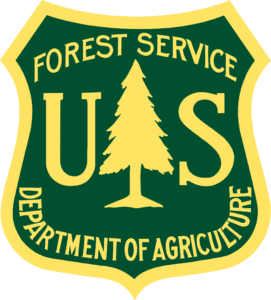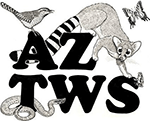
OPENING DATE: 9/26/2016
CLOSING DATE: 10/7/2016
DEPARTMENT: Forest Service
JOB TYPE: Full-time – Permanent
SALARY: $59,246 – $77,019 Salary
POSITION OVERVIEW:
This position is located in the Southwestern Region on the Coconino National Forest, Mogollon Rim Ranger District. Duty station will be in Happy Jack, Arizona.
The primary function of this position is District Wildlife Program Leader, implementing the wildlife management program at the Ranger District, leading and participating on planning teams, and overseeing a permanent seasonal wildlife crew leader and temporary technicians.
For additional information about the duties of the position, please contact Linda Wadleigh at 928-477-5001 or lwadleigh@fs.fed.us.
QUALIFICATIONS:
Degree: Successful completion of a full 4-year course of study in an accredited college or university leading to a bachelor’s or higher degree that included a major field of study in biological science that included at least 9 semester hours in such wildlife subjects as mammalogy, ornithology, animal ecology, wildlife management, or research courses in the field of wildlife biology; and at least 12 semester hours in zoology in such subjects as general zoology, invertebrate zoology, vertebrate zoology, comparative anatomy, physiology, genetics, ecology, cellular biology, parasitology, entomology, or research courses in such subjects (Excess courses in wildlife biology may be used to meet the zoology requirements where appropriate.); and at least 9 semester hours in botany or the related plant sciences.
-OR-
Combination of education and experience — equivalent to a major in biological science (i.e., at least 30 semester hours), with at least 9 semester hours in wildlife subjects, 12 semester hours in zoology, and 9 semester hours in botany or related plant science, as shown above, plus appropriate experience or additional education.
-OR-
3 years of progressively higher level graduate education leading to a Ph.D. degree or Ph.D. or equivalent doctoral degree
-OR-
Specialized experience: Provided input in the wildlife management program by gathering, compiling, and analyzing data to determine environmental conditions, characteristics, and values, and the interrelationship of wildlife resources with other resources; analyzed data and recommended solutions to problems involving a limited section of wildlife resources issues, e.g., interpreted the effect and impact of changes on wildlife habitat as a result of specific resource activities; provided input in the preparation, maintenance, and revision of functional wildlife plans that involved interpretation of data obtained from studies and field surveys.
JOB TASKS:
– Provides guidance for the development of wildlife management plans and/or habitat management plans. Reviews and recommends habitat management and improvement plans for technical soundness and adequacy in meeting overall wildlife management objectives.
– Prepares project work plans and coordinates project work with other Unit personnel taking into consideration wildlife habitat requirements in relation to other multiple-use management of forest and range activities. Responsible for developing the annual program of work for assigned area. Ensures other program objectives are considered with the wildlife program.
– Plans and executes administrative studies and surveys to obtain information on the effects of forest management on wildlife populations, harvest, and movements. Correlates wildlife management with other resource uses such as timber, recreation, and minerals management. Plans, organizes and implements wildlife habitat management programs, with emphasis on maintaining and enhancing bio-diversity. Recognizes problems that may develop and recommends preventative or mitigative actions.
– Participates on interdisciplinary teams for evaluating the impact of Forest Service or non-Forest Service activities on National Forest lands. Reviews Environmental Assessments to determine the adequacy of coordination of wildlife needs. Provides the analysis needed to assess the effects of management activities on Fish, Wildlife and Plant Resources and documents this analysis in an Environmental Assessment. Prepares or reviews biological evaluations for threatened, endangered or sensitive species.
– Monitors wildlife program activities, such as a monitoring program for selected wildlife species to measure response to management activities, including annual surveys to determine the status of endangered, threatened and sensitive wildlife species, animal damage surveys and deer spotlight surveys. Conducts and monitors special studies on the habitat of unique, rare, threatened and endangered species. Makes recommendations for habitat protections.
– Provides functional assistance to other unit personnel to determine current progress in meeting planned programs and objectives, effectiveness of training, and opportunities for cooperative work.
To apply visit: https://www.usajobs.gov/GetJob/ViewDetails/451521400/
